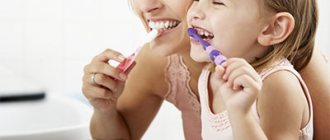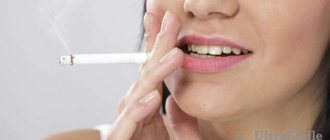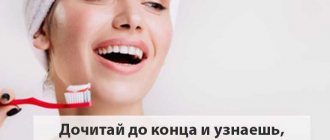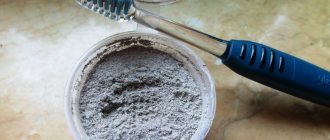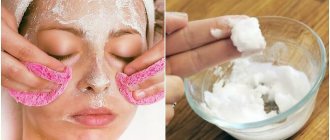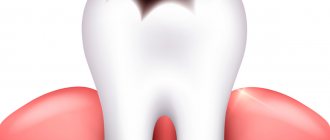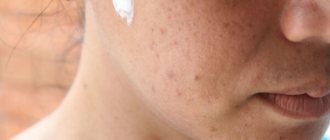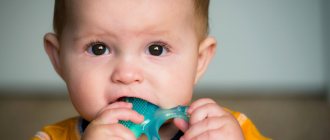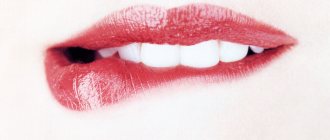17.03.2018
What kind of TOOTHPASTE can you “eat” and in what cases is it better to consult a doctor!
“Most toothpaste is made up of fluoride, a fine abrasive, and a foaming agent. Often parents are AFRAID of taking toothpaste for children with fluoride and take it without it at all. In order to clean your teeth well, you need to take a paste with a fluoride concentration starting with a dosage of 500 ppm. It is important for your child to choose children’s toothpaste according to his age! Fluoride helps prevent tooth decay by maintaining strong tooth enamel and inhibiting the growth of bacteria in plaque. There is no need to be afraid of fluoride itself!” - says pediatric dentist, member of the Association of Preventive and Pediatric Dentistry Yousefian Ehsan. (Shortcut?) To protect children from the dangers of fluoride in toothpaste, parents should treat toothpaste like any other harmful chemical and keep it locked up when not in use. Doctors recommend supervising children under 6 years of age when brushing their teeth and reminding them to spit out the toothpaste rather than swallow it. Parents should also teach children to use toothpaste no larger than a pea-sized amount. Infants younger than 6 months should never be exposed to fluoride toothpaste.
For whom can pasta be dangerous?
There are people for whom getting even a small amount of paste into the body can be very dangerous. At risk: those who are allergic to certain components in the toothpaste, people with disorders of the digestive system and gastrointestinal tract, those with ulcers, gastritis and other diseases, as well as those who regularly swallow a lot of toothpaste accidentally or intentionally. In the latter case, a cumulative effect may appear.
If a very small amount of the product is swallowed by an adult or child, it is completely harmless. The content of components such as saccharin and light cleansing additives does not pose any danger.
It’s another matter when a child brushes his teeth with his parents’ regular toothpaste, in which case swallowing it can have unpleasant consequences. Even a one-time exposure to a toxic product can cause intoxication. Next, we will consider the main list of dangerous additives.
How to protect enamel
It is impossible to completely eliminate “harmful” foods from the diet, and it is not always necessary. You can maintain a healthy and beautiful smile by following simple rules.
The first thing you shouldn’t forget is personal hygiene
. It is advisable to brush your teeth after every meal to remove any leftover food. And if morning and evening care procedures involve the use of toothpaste and brushes, during the day it is useful to use dental floss, mouthwash and even chewing gum (the main thing is not to chew for a long time).
Use toothpicks carefully, and only if there is no other alternative. Do not try to remove stuck pieces with a fork, fingernails or sharp objects. This cleaning method will do more harm than good.
Second, it's diet.
. An excess of citrus fruits, frequent consumption of lemonade, hard foods (crackers, dried fruits, candies, etc.), alcohol contribute to the active spread of bacteria that destroy enamel. It is not necessary to completely eliminate foods from your diet unless otherwise recommended by your doctor, but it is worth reducing the frequency and volume of consumption.
What is good for enamel? Sun and vitamin D, strawberries and cottage cheese. These components contribute to the natural restoration of enamel and strengthen it.
Third. Don't forget to seek help and advice from your dentist. The doctor will tell you how to properly care for your mouth and help you choose a restorative (not just cosmetic) toothpaste for regular use.
In addition, in the dental office you will have professional teeth cleaning (it is recommended to do it 1-2 times a year) and remineralization - the process of restoring enamel with the help of special preparations, including fluoride-containing ones.
Number of views 4,303
Dangerous additives
Saccharin is a non-hazardous substance that helps manufacturers make the taste of pasta more pleasant and soft. However, sugar can also negatively affect the condition of the oral cavity, because, as is known, sweets provoke the development of bacteria and can lead to the gradual destruction of hard tissues.
Glycerin is a necessary additive that prevents toothpaste from quickly hardening and drying out even when opened. Unfortunately, the substance can cause digestive problems. Another component is paraffin. It is necessary to achieve the thickness and viscosity of the product. Large amounts of this substance in the body can lead to severe vomiting or constipation.
Is menthol included in toothpastes dangerous? Unfortunately, yes, it can negatively affect the functioning of the human heart and blood vessels, while it freshens breath very well. Formaldehyde is necessary to resist dangerous microbes, however, frequent use of pastes containing it, and especially their entry into the body when swallowed, can lead to vision problems and the development of pathological processes in the liver and kidneys.
How to use it correctly?
Instructions for use read as follows:
- Take a toothbrush; it is advisable to give preference to soft or medium-hard bristles. You need to moisten it a little in warm water.
- A small amount of powder must be brought to a mushy state. Pour the powder into a separate container and add a couple of drops of water.
- Dip the brush into the resulting mixture.
- Brush your teeth as usual.
You should also consider some useful tips from dentists:
- Do not try to brush your teeth with dry powder; it must be moistened with water.
- It is best to alternate tooth powder with gel paste.
- It is not recommended to use it if you have sensitive enamel.
The first symptoms of intoxication
If there has been regular consumption of toothpaste, the first signs of intoxication of the body may appear. The most common ones include vomiting, upset stomach, severe diarrhea, and high body temperature. Also, a rash and itching often appears on the human body; it may begin to peel, turn red, and itch. The same applies to mucous membranes.
Another frequently diagnosed consequence of pasta consumption is intestinal dysfunction and stool problems. Gradually, internal organs such as the liver and kidneys may be affected.
In rare cases, inflammation of the gastrointestinal tract is observed, gastritis, pain, colitis, esophagitis appear, and ulcers with a high probability of bleeding can form. Any of the above-mentioned complications requires immediate consultation with a doctor and the appointment of the correct treatment regimen.
Four important features of toothpaste
Many parents choose toothpastes for their children based solely on cost and brightness of the packaging, often succumbing to big phrases like “dazzling whitening” or “incredibly durable teeth protection.” And here their huge mistake is that they do not study the composition.
Sensitivity
Healthy teeth need nothing more than fluoride. But if the dentist diagnoses their sensitivity, the fluoride paste should be accompanied by strontim chloride, which relieves discomfort. Ideally, the fluoride content in the paste should be 1350-1500 units. per million. In other words - 0.145% by weight of the paste, or 1450 ppm.
Why do teeth need fluoride?
Whitening
Toothpaste companies have gotten great at advertising their “whitening” products. But professionals say: more than half of tooth whitening toothpastes are not suitable. With their help, minor darkening of the enamel can still be eliminated. However, yellow teeth will have to be dyed white at the dentist's office. Much more effective than using any whitening pastes is simply rinsing your mouth with a solution of baking soda after a cup of tea: this method will keep your enamel unstained longer.
Toothpastes do not always help whiten teeth
Freshness
The person everyone tries to stay away from because of bad breath has probably at least once tried to improve the situation with the help of special pastes promoted by manufacturers with words like “fresh breath.” So: such a paste helps in 22% of cases of gingivitis - inflammation of the gums, one of the causes of unpleasant odor. The degree of effectiveness for periodontitis, which can also cause an unpleasant odor, has not been clarified at all.
Important! Bacteria on the tongue is also a possible cause of halitosis. It also needs to be cleaned every time.
Toothpaste will help freshen your breath
Foam
Toothpaste usually foams due to the content of sodium lauryl sulfate - SLS, also known as sodium lauryl sulfate. Ordinary soap suds, washing away food residues everywhere. But with increased sensitivity of the gums, SLS can very easily cause stomatitis. If your gums are sensitive, you should use a paste that does not contain this additive.
It is better to choose pastes without SLS
Safe dose
Adults and even children are allowed to swallow a small amount of toothpaste daily, but this is not specifically recommended. In order not to worry about the consequences, it is best to first study the composition of the product to determine whether it contains dangerous ingredients.
To protect babies, manufacturing enterprises are developing special baby toothpastes without fluoride in their composition. Fluoride-containing products can be used after the child learns to completely spit the product into the sink after hygiene procedures. It is best to give preference to pastes that do not contain parabens, sulfates, preservatives and antibiotics.
If the patient often encounters the ingestion of paste into the body, then it is better to buy formulations on a natural basis, for example, containing plant extracts, fruits, chalk and even clay. These components are completely harmless, and their properties are no worse than those of artificial additives.
What to do if a child accidentally swallows adult toothpaste? It is recommended to give the baby a sorbent, for example, activated carbon or a drug called Polysorb; those with allergies can be given an antihistamine prescribed by a doctor. If the condition worsens, it is necessary to call an ambulance and rinse the stomach.
previous post
What can replace dental floss?
next entry
HOW MUCH TOOTHPASTE DOES MY CHILD HAVE TO SWALLOW FOR THIS TO BE A PROBLEM?
With scary new toothpaste labels (indicating the fluoride concentration in “some” units - ppm, mg), many parents are wondering what to do when they catch their child eating toothpaste straight from the tube or in the toothpaste bath. smeared all over the counter. This makes it difficult for parents to estimate the amount swallowed. Considering the relatively low fluoride content in most brands (e.g. President Dady, Elmex Kinder, Lacalut baby, Edel white, Splat junior, Emoform actiflour kids, Colgate bubble gum, ROCS baby, etc.), it is quite difficult for a child to take a lethal dose of fluoride at home . If you do know approximately how much fluoride toothpaste a child has eaten, the following table shows how much would need to be swallowed in order to see a doctor (data from the Georgian Poisons Center)
Toothpastes with fluoride salts help solve many dental problems.
Prevention of caries. Fluoride, entering the enamel structure, treats caries at the spot stage and helps to avoid the formation of new carious lesions.
Protection against demineralization. The combination of fluorides with hydroxyapatite (the main structural element of tooth enamel) forms fluorapatite, which is more resistant to acids produced by pathogenic microorganisms. Thanks to this, the processes of enamel demineralization stop. Moreover, fluorides accelerate the process of reminarilation (enrichment of enamel with calcium and phosphorus), which significantly reduces the risk of developing caries.
Protection against lactic acid. Fluoride prevents the production of lactic acid, which means it significantly reduces the growth of pathogenic microorganisms and additionally protects the enamel.
General requirements for conducting FGDS
Keep in mind! In order for gastroscopy to show a reliable clinical picture, a number of requirements must be met:
- Clean gastric mucosa . To do this, you should follow a special diet for several days before the test. It is necessary to exclude from the diet foods that settle on the mucous membrane. These include: legumes, milk, vegetables and fruits.
- Empty stomach. Food in the stomach does not allow gastroscopy. In addition, it can cause a gag reflex. In order for your stomach to be empty in the morning, you need to have dinner with easily digestible foods. Also, you should not drink anything before the diagnosis.
- Complete peace. The patient must undergo FGDS while completely calm - breathing is even. Otherwise, insertion of the gastroscope will be very painful. In addition, in a restless state, you can injure the esophagus during the examination.
- Withdrawal of medications . You should not take medications that coat the mucous membrane. You should also refrain from using painkillers, as they reduce peristalsis.
Note! When performing gastroscopy, it is important that there is no mucus in the stomach.
It is formed not only after eating food, but also as a result of smoking, even brushing your teeth.
Recommendations
You need to apply a little paste on the brush. The main job of cleaning teeth is done not by the toothpaste, but by the bristles of the brush. According to many experts, you don’t have to spend money on toothpaste for your baby; ordinary water will cope with the same tasks no worse, and perhaps even better. For the sake of fluoride, you should also not use toothpaste. Babies have other sources of this element. Some stubborn little ones refuse to brush their teeth if there is no toothpaste on the brush. Then you can use a little trick: squeeze out no more than a tiny pea of paste onto the brush and carefully smear it over the bristles. This will prevent you from licking off the toothpaste. It is also necessary to explain to the child that paste is not food, that it can only be used in the same capacity as, for example, shampoo, but not for hair, but for teeth.
It is also important to brush your teeth properly
When brushing your teeth, rinse your mouth thoroughly several times. This is necessary to remove toothpaste and food debris from the oral cavity. You need to teach your son or daughter to swirl water in their mouth and then spit it out. To do this, it is useful to give the action such a character that the child perceives it as some kind of game. Most children can rinse their mouths by the age of two. And if the baby has not yet learned to do this, the paste should not contain the slightest fluorine content at all!
If you leave a tube of toothpaste your child likes in an accessible place, the child may not be able to cope with the temptation. Therefore, the paste must be hidden somewhere where the child cannot get it. You can also resort to this trick: before calling your son or daughter to brush your teeth, apply the paste to the brush and hide the tube. This simple technique can help save a lot of nerve cells, not to mention preserving the child’s health. For stomatitis, what to rinse with, read our article.
The nuances of brushing your teeth before FGDS
Before gastroscopy, it is strictly forbidden to carry out manipulations that contribute to the formation of gastric secretion - this is eating, smoking.
Can it be cleaned? As for such a morning hygiene procedure as brushing your teeth, it is generally not prohibited.
It should not be done to people with hypersensitivity.
As a result, the body will be ready to vomit, which will significantly complicate the diagnosis.
All other categories of people can brush their teeth, but at least 2 hours before the test . Under no circumstances should you swallow toothpaste or tooth powder . This will provoke the release of gastric juice, thereby complicating the process of performing FGDS.
If, in addition to gastroscopy, it is necessary to take an analysis for bacteriological culture, then in this case the use of toothpaste, powder, mouthwash and other oral hygiene products is prohibited.
They change the microflora in the stomach, as a result of which the test result will be unreliable.
Fluoride in toothpaste: benefit or harm?
The war against fluoride in dentistry began in the middle of the last century in the United States. More precisely, this country was the first to begin fluoridating drinking water in order to strengthen the population’s tooth enamel. Then, in 1969, the technique received WHO approval, and many countries around the world began to adopt advanced American experience. Only after a wave of fluorosis (a chronic disease caused by excess fluoride in the body and affecting not only teeth, but also skeletal bones) swept America in the 70s, the feasibility of water fluoridation was called into question. Despite the fact that at the beginning of the 21st century, reputable scientists, including the Australian researcher W. Evans, came out in support of fluoridation, discussions about the benefits of fluoride in medical circles continue to this day.
So is fluoride in toothpaste actually harmful, or are rumors about its negative effects on humans greatly exaggerated? Let's try to dot all the i's in this issue.
Is it possible to cure an abscess at home?
Patients with acute conditions are admitted to dentistry without a queue. Therefore, if your health worsens, you should not postpone your visit.
The first question that a patient has is: why does pus appear in the gums and how to treat the pathology? The cause of infiltration is a weakened immune system and non-compliance with dental care measures. At the first symptoms of inflammation, you should immediately consult a dentist. Self-opening of a flux neoplasm threatens the addition of a secondary infection.
It is strictly forbidden to heat the inflamed area. Heat activates purulent-necrotic processes and accelerates the spread of infectious agents.
Timely sanitation of the inflammatory focus in a clinical setting prevents complications.
